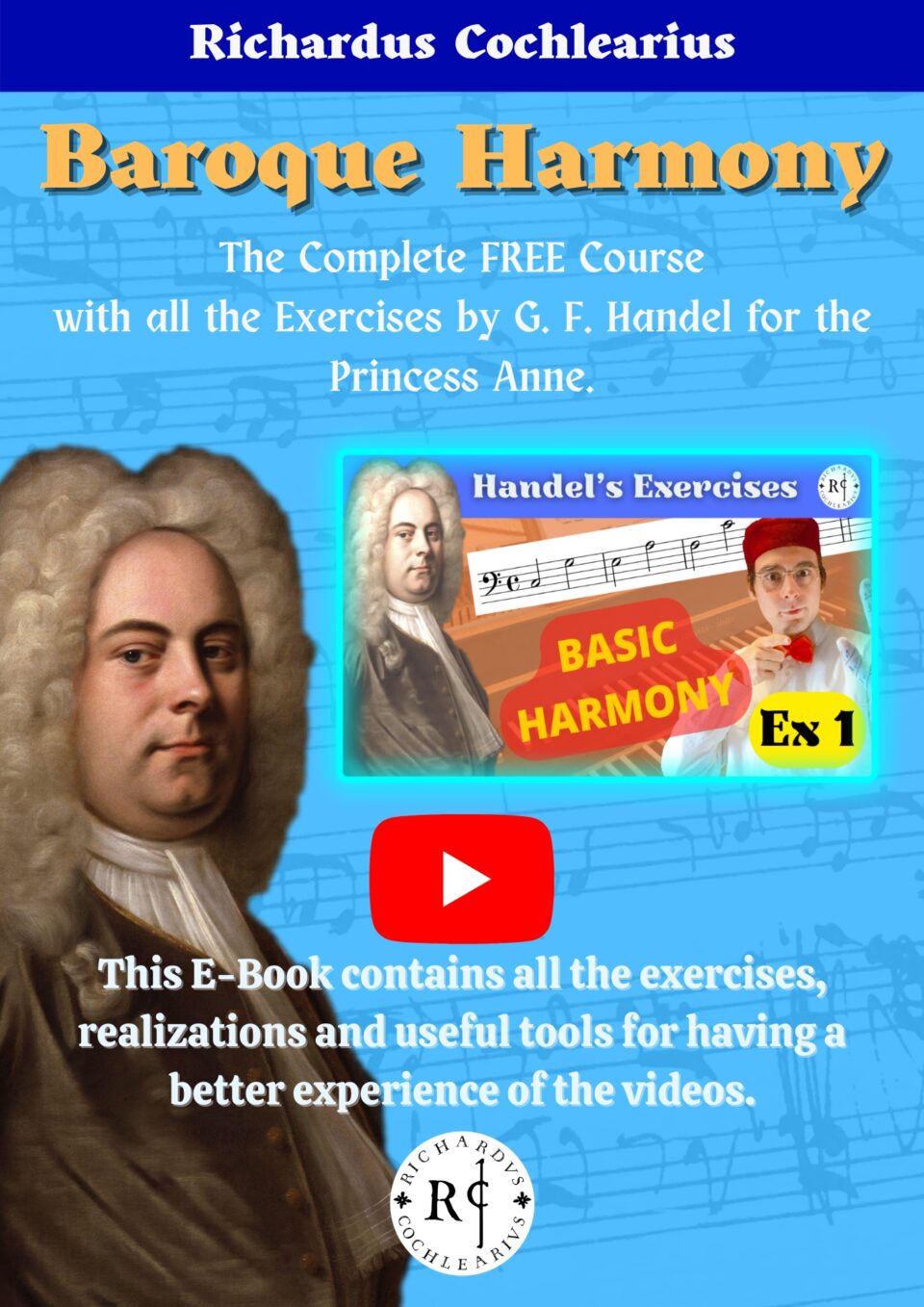Why you Should study Harmony?
You can't compose music if you don't study harmony!
Studying harmony is essential, and not doing so exposes you to the risk of not writing correct melodies, of sticking chords together at random, without any logical sense, and which in the end are a total mess!
Besides, how are you going to write something that sounds good and creates a pleasing effect if you don’t know the grammar of musical language?
J. S. Bach's Method
There are many ways to learn harmony.
Johann Sebastian Bach had his students study Basso Continuo (thorough bass) and Chorale.
Basso Continuo (thorough bass) allowed the student to explore the vast panorama of bass motions (moti del basso), while the Chorale allowed students to use the harmonic knowledge and skills they had acquired and assimilated with the basso continuo with a given melody.

Basso Continuo vs Chorale


The Basso Continuo exercise therefore consists of creating harmony starting from the bassline, while the Chorale exercise consists of creating harmony starting from the top, that is, from the chorale melody to the soprano.
Knowing the rules and techniques of harmony is therefore also essential for composing chorales, and Handel’s approach is one of the best.
G. F. Handel's Method
G. F. Handel wrote 24 Harmony Exercises for Princess Anne, which I want to offer you in this guide as a useful exercise, both for reviewing things you already know and for delving into new aspects you have yet to discover instead!
The 24 exercises are in gradual order of difficulty, so it is important that you follow the order I propose below: let’s begin!


The 24 Exercises to Learn and Improve Harmony
Here we come to the exercises!
Below you will find a list of exercises divided into categories, so that you know what you can learn and improve in each group of exercises.
My Special Gift for you!
But first accept my special gift for you!
I have prepared an exercise book that you can print or use in digiral version to do your exercises.
Everything is already ready and prepared for writing!
You just download it and simply do!

5/3 Chords
Exercise 1
What you will learn
In the first exercise of Harmony and Thorough Bass, you learn to correctly connect chords to optimize voice leading and maintain common tones.
Exercise 2
What you will learn
In the second exercise of Harmony and Figured Bass, you learn to use the 5/3 chord over a slightly more active bass line.
Exercise 3
What you will learn
In the third exercise of Harmony and Basso Continuo, you learn to use harmonies over a bass that moves in eighth notes, identifying structural notes from embellishments.
Exercise 4
What you will learn
In the fourth exercise of Harmony and Thorough Bass, you become even more skilled with the 5/3 chord, using it in minor keys and in triple meter.
Exercise 5
What you will learn
In the fifth exercise of Harmony and Basso Continuo, you will have a bass in 3/2 where you need to recognize the structural notes that lead the harmony from the passing notes that you should not harmonize.
Exercise 6
What you will learn
In the sixth exercise of Harmony and Figured Bass, you will learn to use chromaticism over a bass using 5/3 chords.

6/3 Chord
Paragrafo 2
Exercise 7
What you will learn
In the seventh exercise of Harmony and Thorough Bass, you learn to use the 6/3 chord, particularly in its combination known as Fauxbourdon, which you can further explore in detail in stage 3.1 of the course The Partimento Method.
Exercise 8
What you will learn
In the ninth exercise of Harmony and Basso Continuo, you will combine Fauxbourdon with the Neapolitan Sixth, which you can further study and practice with other exercises in Stage 4.6 of The Partimento Method.
Exercise 9
What you will learn
In the sixth exercise of Harmony and Figured Bass, you will learn to use chromaticism over a bass using 5/3 chords.
4-3 Suspension
Exercise 10
What you will learn
In the sixth exercise of Harmony and Figured Bass, you will learn to use chromaticism over a bass using 5/3 chords.
6/4 Chord
Exercise 11
What you will learn
In the sixth exercise of Harmony and Figured Bass, you will learn to use chromaticism over a bass using 5/3 chords.
6/5 Chord
Exercise 12
What you will learn
In the sixth exercise of Harmony and Figured Bass, you will learn to use chromaticism over a bass using 5/3 chords.
5/2 Chord
Exercise 13
What you will learn
In the sixth exercise of Harmony and Figured Bass, you will learn to use chromaticism over a bass using 5/3 chords.
7-6 Suspension
Exercise 14
What you will learn
In the sixth exercise of Harmony and Figured Bass, you will learn to use chromaticism over a bass using 5/3 chords.
7 Chord
Exercise 15
What you will learn
In the sixth exercise of Harmony and Figured Bass, you will learn to use chromaticism over a bass using 5/3 chords.
9-8 Suspension
Exercise 16
What you will learn
In the sixth exercise of Harmony and Figured Bass, you will learn to use chromaticism over a bass using 5/3 chords.
Exercise 17
What you will learn
In the sixth exercise of Harmony and Figured Bass, you will learn to use chromaticism over a bass using 5/3 chords.
Exercise 18
What you will learn
In the sixth exercise of Harmony and Figured Bass, you will learn to use chromaticism over a bass using 5/3 chords.
6/4/2 Chord
Exercise 19
What you will learn
In the sixth exercise of Harmony and Figured Bass, you will learn to use chromaticism over a bass using 5/3 chords.

Double Suspensions: 9/7-8/6; 9/4-8/3
Exercise 20
What you will learn
In the sixth exercise of Harmony and Figured Bass, you will learn to use chromaticism over a bass using 5/3 chords.
Exercise 21
What you will learn
In the sixth exercise of Harmony and Figured Bass, you will learn to use chromaticism over a bass using 5/3 chords.
Summarizing and consolidation exercises
Exercise 22
What you will learn
In the sixth exercise of Harmony and Figured Bass, you will learn to use chromaticism over a bass using 5/3 chords.
Exercise 23
What you will learn
In the sixth exercise of Harmony and Figured Bass, you will learn to use chromaticism over a bass using 5/3 chords.
Exercise 24
What you will learn
In the sixth exercise of Harmony and Figured Bass, you will learn to use chromaticism over a bass using 5/3 chords.







